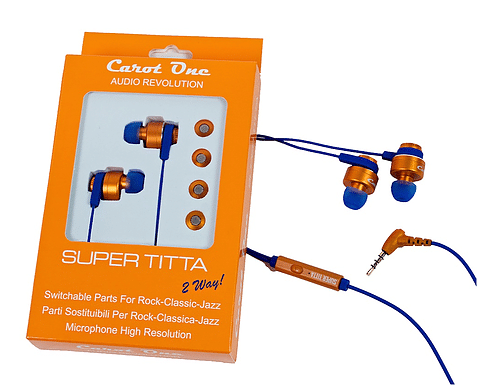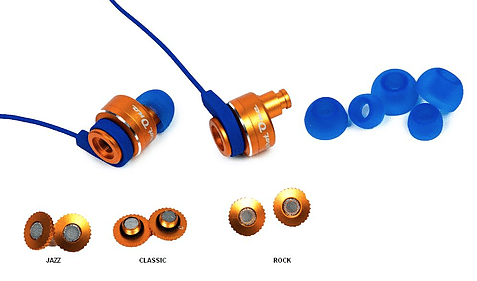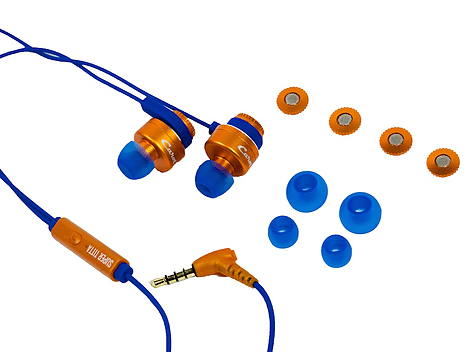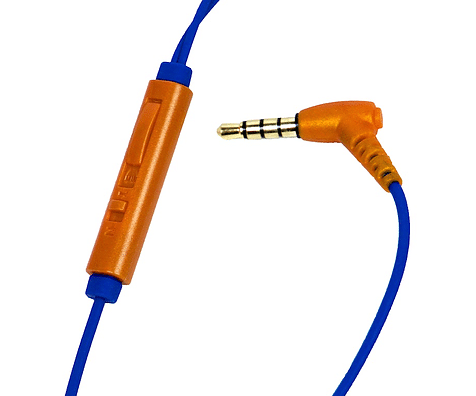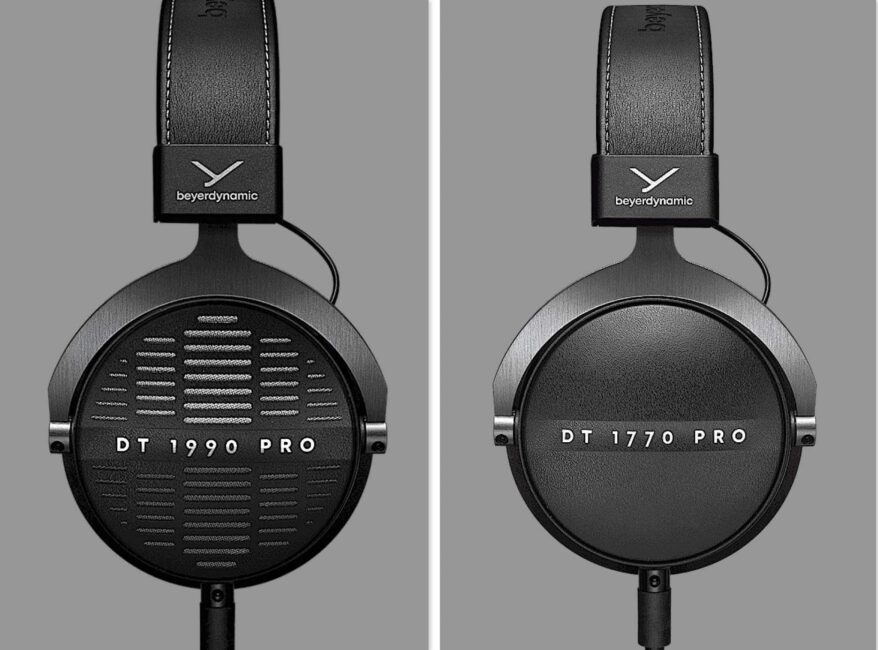The Article
Carot One Super Titta: Titta The Second
3rd January 2016
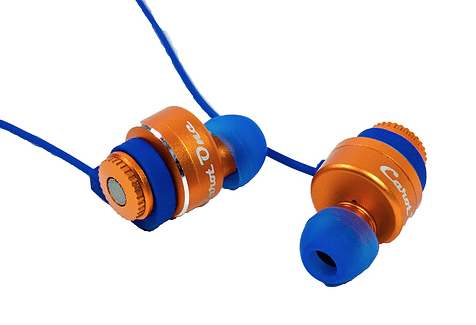
Carot One has released a new earphone design with a set of intriguing switchable caps to change the nature of the design’s sound output. Paul Rigby reviews the Super Titta
I have already reviewed the cheap and cheerful Carot One Titta earphones within this site which received a reasonably good review and I was hoping for more from their big brothers, the Super Tittas. The Supers retain the same colour scheme which you can see in the accompanying images while the chassis is large…hefty, even. I wondered if the chassis size might even be an issue for some. They are rather macho and muscular but they accompanying weight might pull the earphone out of the ear.
The chassis, though, is not the main talking point, the mechanical EQ system is. What Carot One has done is to basically ignore the popular method of applying EQ to earphones and headphones. That demands that you plug your earphones into your phone for example and then, through an app of some sort, flick a ream of switches to modify the inherent sound. Not here. Instead, the rear of each chassis provides a screw thread. That is filled by a selection of discs that can be screwed into each hole. Anyone who has used a software EQ will be familiar with the conception of this mechanical variation as the three sets of discs arrive with a ‘J’ (Jazz), ‘R’ (rock) and ‘C’ (classical) marking on each. The idea, of course, is that each disc should be attached to the Super Tittas when you are playing that particular type of music.
Arriving in a relatively simple packaging, the Super Tittas include a selection of varying sized, removable ear fittings and a cheap plastic inline phone control that sits on a tangly looking, 3.5mm plugged, blue lead.
SOUND QUALITY
I compared the Super Titta with an array of Sennheiser earphones covering a range of price points above and below the Carot One design and began the sound tests with a copy of the new, half speed, Queen album, A Night At The Opera and the track Death On Two Legs. I plugged all of the test earphones into my reference hi-fi at this time. I began, as this was a rock track, with the rock discs screwed into the back of each earphone chassis of the Super Titta. The results were not good. The sound output was muffled and muddy with deadened midrange frequencies and no treble output at all. I replaced the rock discs with the jazz discs which improved matters. The soundstage opened up slightly and Freddie Mercury’s vocals added a new vitality. New air and space was infused into the percussion and guitar although this configuration still struggled to match the performance of my reference earphones in all sonic areas. I then tried the classical disc on the rear of the Super Tittas but the balance swung the other way with the sound output now sounding tinny, with zero bass and even very little midrange to speak about.
I then had a quick brainstorm. What would happen if I removed the discs and left a gaping hole at the back of each earphone? Not particularly recommended and not really the point of the design but still…? The result? The best sound quality so far! Creating any sort of balanced sounding, closed-backed headphone or earphone is very difficult and Carot One proves the point.
Despite the fact that the Super Tittas still struggled against all of my reference earphones in terms of maturity, delicacy, fragility, bass heft and midrange detail, the ‘open back’ mode of the Super Tittas – which I’d just invented, it now appeared – offered the best option in terms of an open soundstage for this particular design. The latter now offered some breadth and depth while the midrange provided a fuller, more interesting presentation.
Turning to the soundtrack orchestrations of composer, conductor and arranger Gianni Ferrio and El Varon Rebuscante. Again, the reference Sennheisers, even the lower costs models, provided more maturity and tonal realism than the Carot Ones which tended to exhibit midrange veiling and a restriction in soundstage depth. I tried the Super Tittas with the recommended classical discs but I’m afraid the general sound output was similar to AM radio so I removed the discs once again. I returned to ‘open back’ mode which improved the bass extension and midrange fullness.
Turning away from my reference hi-fi, I plugged the Super Tittas into my iPhone 5S and played a couple of MP3s. Firstly by Paul McCartney (We Three) and then by Kylie Minogue (All The Lovers). Granted, the earphones were plugged into the inferior headphone stage of the iPhone but that restriction was no excuse for the Super Tittas that still struggled to provide a balanced, well structured soundstage. While the iPhone failed to produce a quality suite of lower frequencies, the Sennheiser references did find the weight of the sweeping strings and the delicacy of the plucked strings from the acoustic guitar. The Super Tittas found it tough to emulate this performance despite providing an even handed delivery with a steady midrange performance.
CONCLUSION
The notion of providing a manual EQ system for a pair of earphones is a great idea. Not everyone wants to fiddle with these sorts of settings in an associated app and other users can become confused or just can’t be bothered to fiddle with the gamut of choices that such apps can provide. Hence, the definite, simple EQ options provided by the Carot One is a user friendly and wholly excellent idea. It’s just a pity that the technology wasn’t better thought through to provide good quality sonics. As it stood, I preferred to listen without any EQ at all.
The overall sound quality of the Super Tittas, as we have seen, does have issues while the bulky chassis of the design is not the most comfortable, especially for extended use while the stringy cable doesn’t provide too much confidence in sonic terms or in general use.
CAROT ONE SUPER TITTA
Price: €99 (P&P is free)
Website: www.carotone.it
Tel: +39 081 667086
Good: EQ disc system idea, colourful, inline control option
Bad: overly large chassis design, veiled mids, muddy bass, absent treble, EQ disc implementation, inline control difficult to use

